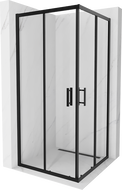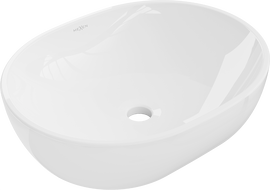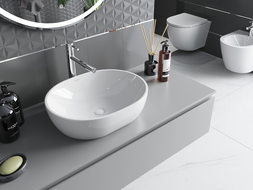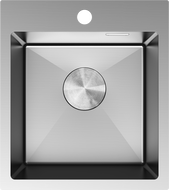
Although a shower can be incredibly efficient and quick, there’s nothing like an old-fashioned classic bathtub. Nowadays, bathtubs find their place in many contemporary arrangements. Modern models impress with their class, style, and shape. Unfortunately, the space beneath them is not visually appealing anymore. The best way to hide it is simply to enclose the bathtub. On the market, you will find ready-made enclosures as well as ideas on how to construct an enclosure for a corner bathtub yourself.
Why does bathtub enclosure yield results?
A corner bathtub or rectangular bathtub is primarily a functional element, but also saves space. It can easily be placed against a wall. This way, they can even fit in a smaller bathroom, and the area that needs to be enclosed will be significantly less. The situation is different with freestanding bathtubs. They appear much more dignified and elegant, but let’s not deceive ourselves – they are meant solely for spacious bathrooms.
Practical wall-mounted bathtubs often stand on small, unsightly legs, which are best hidden from view. An appropriate bathtub enclosure will effectively mask any unwanted views, as well as the siphon and drainage. Moreover, the bathtub enclosure will also hide the unattractive flooring and any imperfections. By opting for a DIY bathtub enclosure, you can gain additional space to store your cosmetics. Enclosing the bathtub is primarily a nod to comfort. Cleaning the space under the bathtub can be quite a nightmare. With a bathtub enclosure, this task completely loses its significance.
What to use to enclose a corner bathtub? What type of bathtub enclosure to choose?
- To enclose or clad a corner bathtub, it’s best to start by preparing an appropriate frame. System profiles work best for this role.
- In the case of a shorter bathtub, up to 1.5 m in length, two UD profiles and one CD profile about 4 m long will suffice.
- To connect the individual profiles, self-drilling screws should be used.
- Plates for the frame, such as drywall, can be attached using self-tapping screws.
- You’ll also need expansion plugs. These are necessary for fastening the structure to the surrounding walls and floor.
- Of course, the bathtub enclosure should be made of waterproof boards. These usually measure 120 x 300 cm. Interestingly, usually, only one piece is enough. It will effectively enclose the bathtub even in two layers. Transporting them won’t be easy. To make it a bit easier, you can initially score them with a knife, then break them.
A solid form of bathtub enclosure (compared to drywall or solutions like ready panels) is a masonry enclosure. This is based on cellular concrete blocks. Depending on the type, it may have a thickness of 6 cm or 8 cm. Not many are needed, usually two rows of such products are completely sufficient. The blocks should be connected using cement mortar – for this, thin-layer mortar will also do the job. A concrete block enclosure is durable and extremely solid, which can be significant in the case of large corner bathtubs or rectangular bathtubs.
The most popular solution is a bathtub enclosure with ceramic tiles. The popularity of this solution has its advantages. Most importantly, there is a huge selection of these products available on the market. This makes it easy to match the color and pattern of the tiles to your dream arrangement. Ceramic tile enclosures are extremely durable, yet very effective. The downside? If you want to refresh the bathroom, the tiles have to be removed, and the bathtub enclosed anew. Besides, tiles, just like masonry enclosures, can make access to the inspection hole difficult.
Ceramic tiles retain their original charm – they do not discolor over time and are resistant to moisture and minor mechanical damage. Tiles can be laid on any structures that were previously prepared for them. You can easily place them on an enclosure made of drywall and concrete blocks. Keep a few spare tiles on hand in case one breaks or falls off.
Bathtub enclosure – preparing the substrate
- To cover the surface with tiles, you must first appropriately prime the surface of the enclosure made of boards or blocks.
- It’s best to use a primer that features deep penetration.
- If you want to protect against moisture, it’s worth additionally applying a liquid membrane.
- To ensure the enclosure is solid and neatly done, several items will be necessary.
- Flexible tile adhesive, decorative finishing tiles, and grout are essential.
- Don’t forget about sanitary silicone, a measuring tape, a knife, a level, and a drill. Of course, the selection of appropriate tools depends on the specifics of the enclosure.
- Before starting work on the frame structure, you should begin with the proper positioning of the bathtub.
- Above all, securely install the supporting legs.
- The walls surrounding the bathtub and the floor should already be appropriately finished – they must have waterproof insulation from liquid membrane, and they should also be sealed.
- The corner bathtub should fit snugly against the wall at the point where their sides create a right angle.
Durable enclosure or ready panels?
As you can see, enclosing a bathtub is a complex topic. Each solution has its pros and cons, whether drywall or ceramic tiles. When choosing how to enclose the bathtub, let’s ask ourselves whether we plan to refresh the bathroom’s interior relatively often? If not, then it’s worth opting for a solid enclosure, tailored to the model of the bathtub while ensuring access to the inspection hole.

















